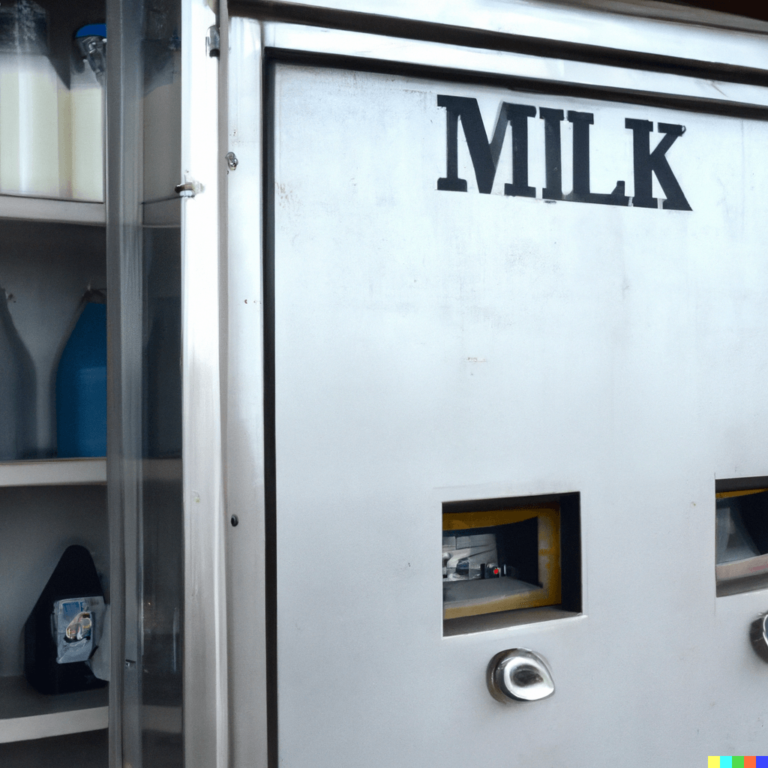How Much Electricity Does a Vending Machine Use: kWh Per Day
Like any other business, vending machines also have their upkeep expenses, and of these expenses is electricity.
But exactly how much electricity does a vending machine use?
What is the Average Monthly Vending Machine Energy Consumption?
An average vending machine with refrigeration consumes between 7.5 and 8.5 kWh per day costing around $30-50 per month. While non-refrigerated vending machines will consume almost half of these numbers. However, the exact number may vary from one machine to another due to tons of factors.
However, non-refrigerated vending machines will consume almost half of these numbers.
Here’s an estimated table for a standard vending machine:
| Type of Vending Machine | Electricity Usage per Month (kWh) | Cost per Month ($) |
|---|---|---|
| Snack vending machine | 300-500 | $30-$50 |
| Drink vending machine | 500-800 | $50-$80 |
| Combo vending machine | 600-1000 | $60-$100 |
Electric consumption is measured in kilowatt-hours (kWh), which is equivalent to sustaining 1,000 watts for one hour. The more energy consumed the higher the number.
When it comes to vending machines, this energy consumption can vary greatly due to various factors.
However, vending machines are usually designed to operate 24 hours a day all week. It’s easy to extrapolate the average monthly consumption of the machine by multiplying the energy consumption of a single day by 30.
RELATED READ: Do Coffee Vending Machines Provide Cups?
Factors That Affect Energy Consumption of a Vending Machine
Now that you know more about the average energy consumption of a vending machine, it’s time to take a quick look at the factors that may affect these costs.
1. Type of Vending Machine
For starters, you should know that different vending machines will have different consumption rates.
For example, glass front and snack vending machines consume less power than soda and ice vending machines. This variation doesn’t only depend on the machine’s type but also among models of the same type.
2. Refrigeration and Heating
Sustaining a specific temperature is one of the major aspects that control the energy consumption of a vending machine.
Ideally, vending machines that require refrigeration or heating will consume extra power. For that reason, if your vending machine is a soda or coffee vending machine, the machine will draw more electricity than regular vending machines.
3. Size of the Machine
Larger vending machines don’t only require more heating or refrigeration, but also have a more sophisticated vending system.
For that reason, you should expect a large vending machine with multiple rows and columns of items to require more energy than a simple mini-vending machine.
4. Energy Efficiency Rating
The star rating of any appliance is the measure of its efficiency when compared to similar devices of the same class.
A more efficient vending machine means that the energy wasted in the machine is less and therefore, it’ll save you a lot of money in the long run.
5. Load Management System
Some vending machines come with a load management system in which the machine goes through energy-saving mode when it’s not used for a long time or during a specific schedule.
6. Lighting System
Some vending machines will have a lot of lights to display the items inside of them or to advertise themselves and stand out.
These lamps will consume a considerable amount of electricity when left on all day and night and play a major role in controlling your electricity bill.
7. Frequency of Usage
A vending machine that is standing in a very crowded area, such as a gas station or park, will usually be operating continuously for several hours during the day.
The more frequently the vending machine operates, the more electricity it’s going to consume at a given time.
How Can You Know the Energy Consumption of a Vending Machine?
The easiest method to know how much electricity a vending machine consumes is by checking the energy consumption guide in the vending machine’s user manual. There, it should be stated exactly how many watt-hours are consumed in a given period of time.
Alternatively, there are watt-hour meters that can help you measure the energy consumption of a given appliance at a time.
For example, some watt-hour reader from Kuman has a connection time, cost calculator, and a backlit LCD screen for easy reading.
Who Pays for the Vending Machine’s Electricity?
In most cases, the electricity bill is the responsibility of the owner of the business where your vending machine is standing.
This is because, in most cases, your agreement and costs will also include benefiting from the utilities in the business, including water and electricity coverage.
However, in some cases, the owner of the vending machine might be responsible for electricity bills, but in that case, the vending machine must be connected to a watt-hour meter to measure the electricity it receives from the wall.
How to Save Money on Your Vending Machine Electricity?
Last but not least, here are some valuable tips and tricks that can help you money on your electricity bill:
- If you ever get the option, choose a vending machine with a better energy efficiency rating and an inverter refrigeration unit, as they can save up to 50% on electricity consumption.
- Ask the business where your vending machine is standing to turn off the advertising lights during the day
- Try to install more efficient lamps in your vending machine, such as T8 lamps
- Keep a regular schedule for the refrigeration unit to make sure that it works at maximum capacity
The Bottom Line
With that said, you now know how much electricity a vending machine typically uses. As you can see, the average energy consumption will vary greatly depending on the type of vending machine in question as well as its energy efficiency, load manager system, lighting, and more.
Ideally, a typical vending machine with refrigeration is expected to consume anywhere between 7.5 to 8.5 kWh every day in standard conditions.
However, you can easily reduce the energy consumption of your vending machine with some simple tricks.
Again these numbers can vary from many factors unaccounted for and usage.






